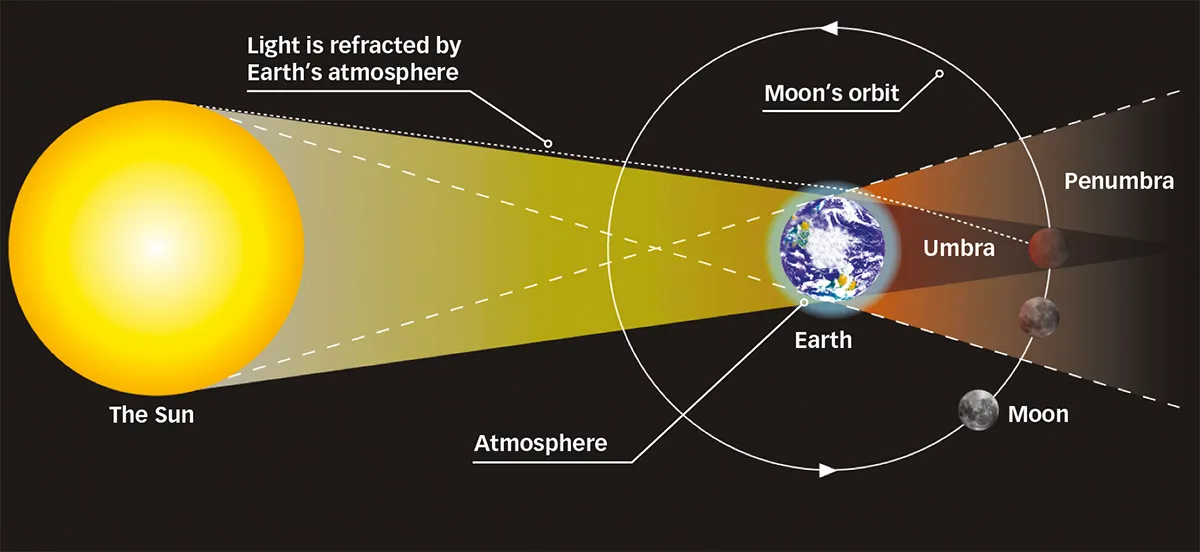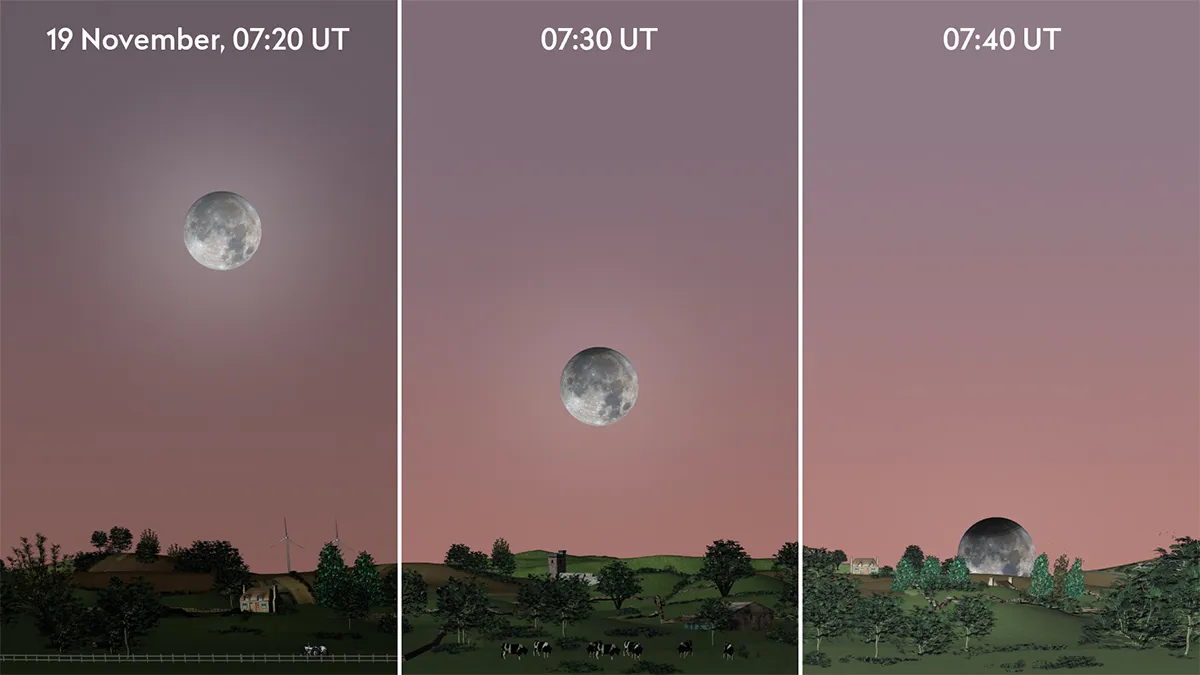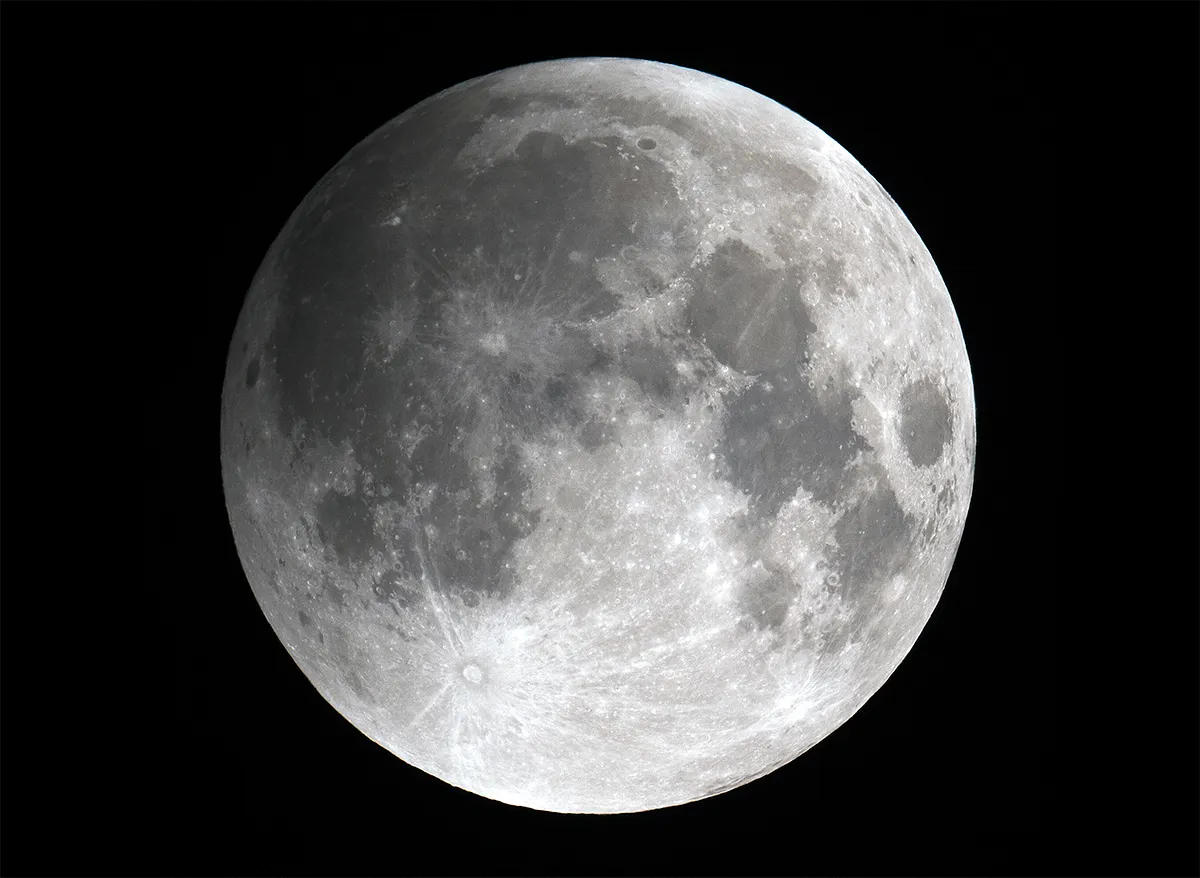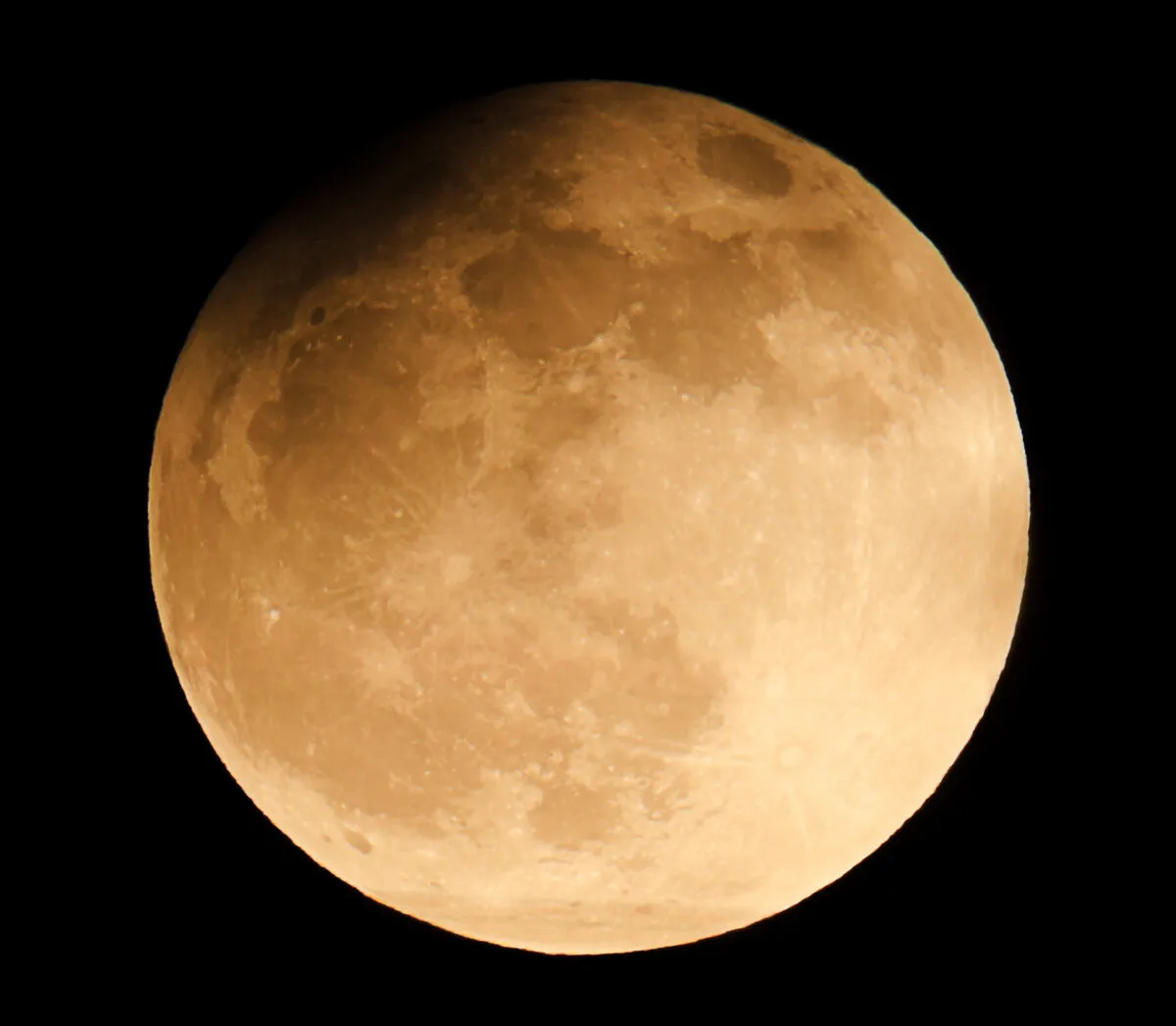This week, on 19 November, a partial lunar eclipse will be visible over North America, parts of Asia, western Continental Europe and the UK.
From the UK, the lunar eclipse can be seen from 06:00 UT until moonset, making this a great event for early risers.
- Keep up to date with upcoming astronomical events by signing up to the BBC Sky at Night Magazine e-newsletter
- Find out when the next eclipse is taking place
What is a lunar eclipse?

A lunar eclipse causes darkening and changes of colour on the lunar surface as Earth blocks the passage of sunlight to the Moon.
Only light from the Sun that has been refracted by Earth's atmosphere reaches the Moon (as indicated by the bent line in the above illustration).
As the Sun’s rays intercept Earth, it causes the formation of two different zones of shadow:
- The penumbra, where some of the Sun is always seen
- The umbra, where the Sun is completely hidden by Earth
A lunar eclipse appears to begin as the Moon moves into the umbra region. The lunar surface darkens and sometimes takes on an orange-red tint.
How to see the lunar eclipse

If you're viewing the partial lunar eclipse from the UK on the morning of 19 November, get up nice and early.
Around 05:30 UT you’ll see a beautiful full Moon shining away above the western horizon. As time goes by and the Moon drops towards the horizon it’ll become eclipsed by Earth’s shadow, presenting what, it’s fair to say, is a tricky partial eclipse.
The background sky will technically still be astronomically dark at this time (the presence of that bright Moon and its reflected sunlight will have an effect of course, but that’s not a concern here), but as the Moon appears to drop towards the west-northwest horizon, dawn begins.
As the sky lightens, the Moon remains visible – its brightness sustaining the view in the brightening morning twilight.

The Moon enters the weak outer part of Earth’s shadow, the penumbra, at 06:02 UT, but this is unlikely to be seen.
As time advances, the Moon heads deeper into the penumbra, towards the darker umbral shadow.
It reaches the umbral shadow at 07:19 UT and the period leading up to this will show the Moon’s northwest limb becoming darker as it enters the denser part of the penumbra.
The umbra is more defined and a distinct shadow edge will start to appear after 07:19 UT, but the Moon’s low altitude and the brightening sky will make things tricky across the UK.

Best places to see the 19 November lunar eclipse
Eclipse magnitude is a measure of how much of the apparent diameter of the body being eclipsed is covered by the eclipsing entity.
In this case the body being eclipsed is the Moon, the eclipsing entity is Earth’s shadow.
The best views with the greatest magnitude percentages will be from locations further north and west within the UK.
If we start with London, the umbra crossing starts just 6 minutes before moonset and the eclipse only reaches a maximum magnitude of 3% before the Moon is lost below the horizon.
In contrast, Stornoway on the Isle of Lewis experiences just over an hour of umbral shadow crossing, the partial reaching a peak magnitude of 74% before moonset.
From the west coast of Ireland the umbral eclipse begins an hour before moonset, the peak magnitude reaching 68%.
Back in the UK, the eclipse reaches a magnitude of 18% from the centre, where the Moon sets 20 minutes after the start of the umbral phase.
In order to see anything of this event, it’s essential to find a location where the horizon is clear, unobstructed and preferably flat in a west-northwest direction.
A seaward horizon in this direction is perfect.
This guide originally appeared in the November 2021 issue of BBC Sky at Night Magazine.
